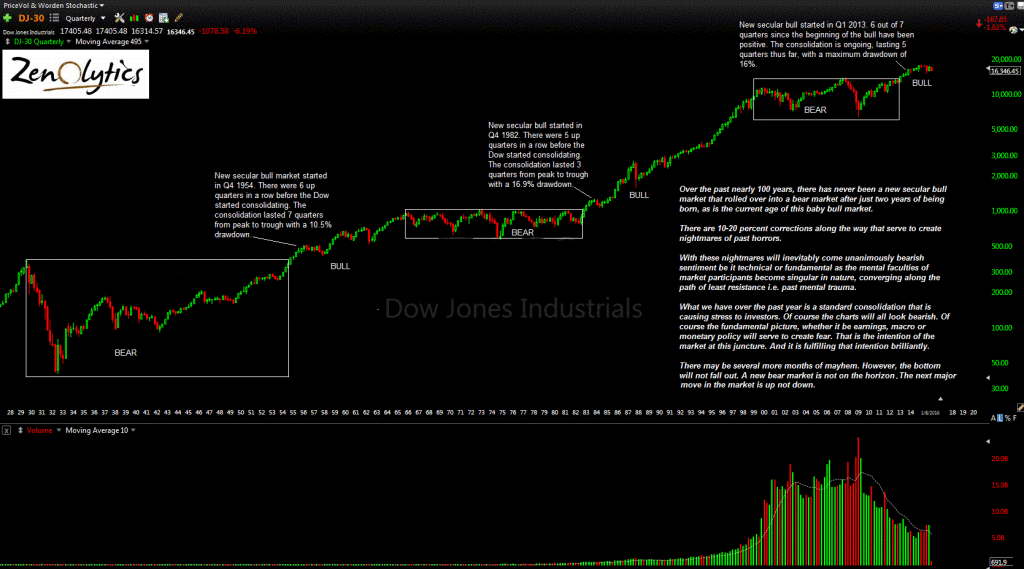It is important to keep this one fact in mind when making any observations with regards to the financial markets at present: The predominant factor influencing thinking in the global markets currently is past pain. The current generation of market participants, be they retail investors, fund managers, analysts and journalists have only known struggle in the markets. This type of foundation for the stewards of capital and popular thinking with respect to investing creates unusually adverse reactions to downside volatility in asset prices. A vicious cycle then ensues of fearful headlines, commentary and opinions reinforcing the already existing negativity, which spirals into a black hole of irrational thinking.
Against this type of backdrop you very simply have to approach information as if it is emanating from an impaired source. Otherwise, you have no chance to make the most beneficial decisions necessary to create outperformance, as you are mentally blending into unintelligible chaos.
In order to discover some clarity and perspective I want to again turn to a source that too few investors bother with: The quarterly chart for the Dow going back 100 years. This chart was discussed most recently in January.
Here is the chart provided in the above article:
(click to enlarge)
If this 16% pullback from peak to trough in the Dow is to be considered a bear market, then what would be call these?
1983 Q4 - 1984 Q2 Dow falls 17%.
One year later the Dow is 24% higher at a new all-time high.
1987 Q4 Dow falls 41%.
One year later the Dow is 34% higher. The Dow would be at new all-time highs in Q3 1989.
1990 Q3-Q4 Dow falls 22%.
One year later the Dow is 35% higher at a new all-time high.
1997 Q3-Q4 Dow falls 16%.
One year later the Dow is 31% higher at a new all-time high.
1998 Q3 Dow falls 21%.
One year later the Dow is 40% higher at a new all-time high.
2015 Q2 - Present Dow falls 16% from peak to Q3 2015 low.
The above are secular bull market corrections that are invariably mistaken for the start of new bear markets. Every single one of the relatively short-lived corrections listed above were accompanied by discussion of various factors leading to the start of a bear market or complete conviction that a bear market had already started.
The current correction is the first of this secular bull market. To believe that we are in a bear market is to believe that all of the above highlighted corrections were bear markets, as well. Additionally, to believe we are in a bear market is presumptive, reactionary and more a derivative of past emotional trauma than anything based on viable empirical data.

